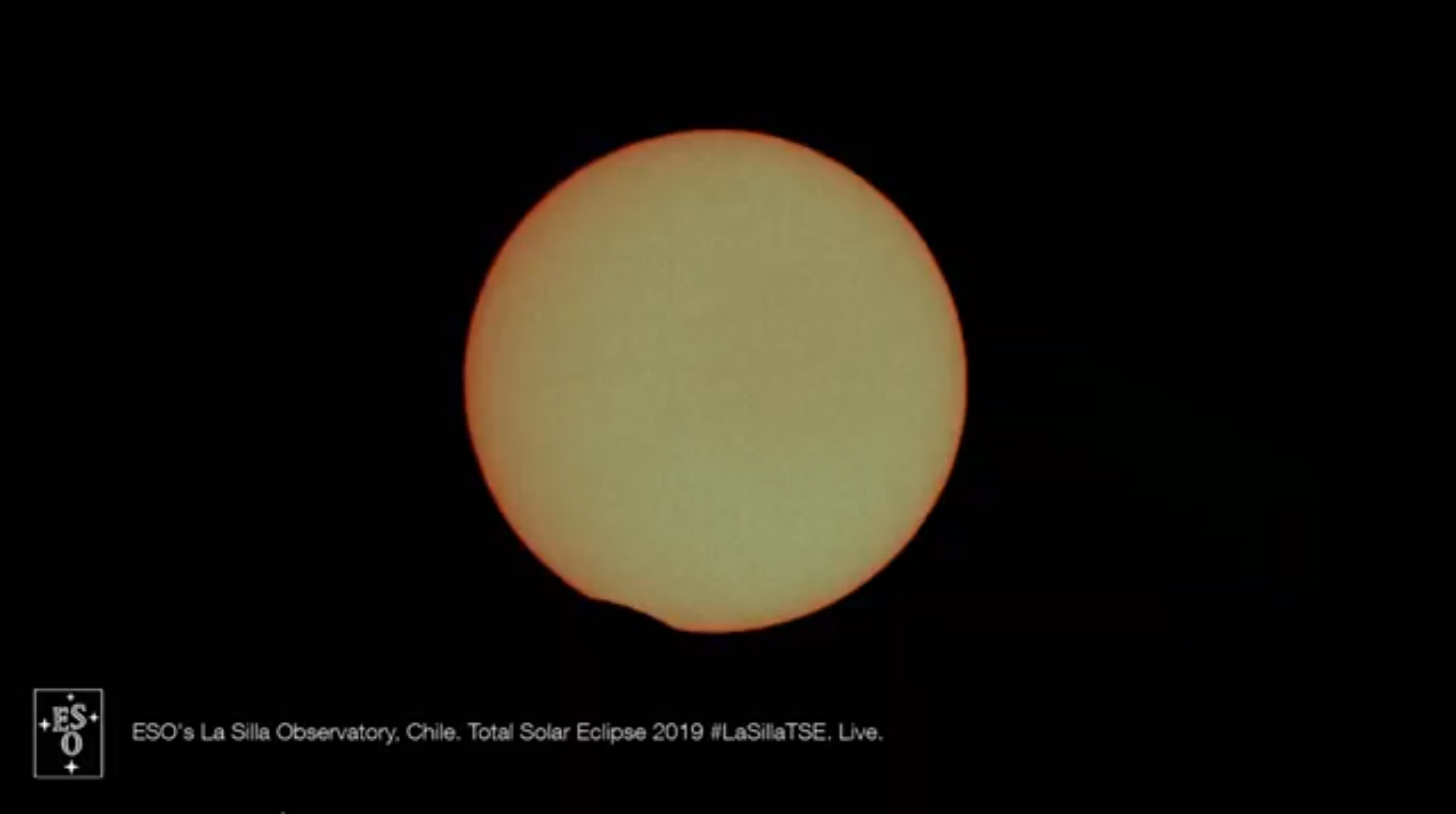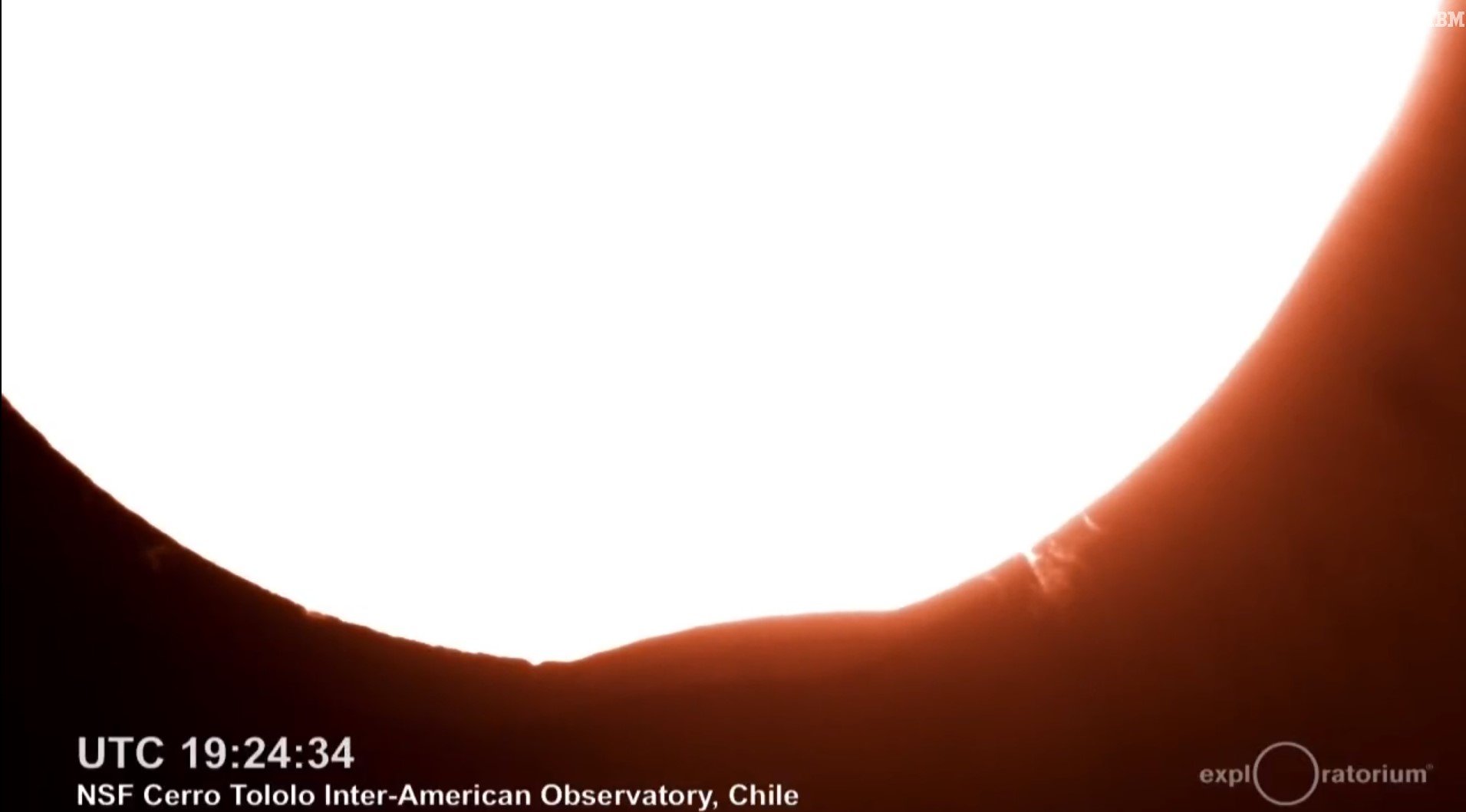Here's the First Image from the Only Total Solar Eclipse of 2019!
Earth is once again experiencing the most stunning celestial alignment — a total solar eclipse.
Today (July 2), the sun and moon are aligning so precisely that for a swath of South America, day will briefly turn to twilight and the sun's ghostly halo-like corona will become visible. But the moment of totality is bracketed by the slow march of the moon across the sun's disk. That process has just begun.
Related: The Total Solar Eclipse Is Today! Here's What to Expect

Totality will begin near La Serena, Chile, at 4:38 p.m. EDT (2038 GMT) and will last in La Serena for 2 minutes and 18 seconds. The eclipse will progress eastward along the band of totality, ending near Buenos Aires, Argentina.
Viewers north and south of the band of totality will be able to catch a partial solar eclipse through the afternoon, with beginning and ending times dependent on their precise location. For these skywatchers, the moon will seemingly take a bite out of the sun, then retreat.

If you're on the ground in South America, remember it's never safe to look at the sun without eye protection except for during totality! Even when the moon partially obscures the sun, you should protect your eyes by wearing eclipse glasses, using a solar viewer, or watching the spectacle indirectly.
It's much easier to safely watch the solar eclipse online, of course; just tune into any of the available webcasts or watch at Space.com courtesy of ESO.
Get the Space.com Newsletter
Breaking space news, the latest updates on rocket launches, skywatching events and more!
- Total Solar Eclipse 2019: Video Streams and Webcasts to Watch Live
- Total Solar Eclipse 2019: Path, Viewing Maps and Photo Guide
- Solar Eclipse Weather Update: Here's the Forecast for the Path of Totality
Email Meghan Bartels at mbartels@space.com or follow her @meghanbartels. Follow us on Twitter @Spacedotcom and on Facebook.
Join our Space Forums to keep talking space on the latest missions, night sky and more! And if you have a news tip, correction or comment, let us know at: community@space.com.

Meghan is a senior writer at Space.com and has more than five years' experience as a science journalist based in New York City. She joined Space.com in July 2018, with previous writing published in outlets including Newsweek and Audubon. Meghan earned an MA in science journalism from New York University and a BA in classics from Georgetown University, and in her free time she enjoys reading and visiting museums. Follow her on Twitter at @meghanbartels.









